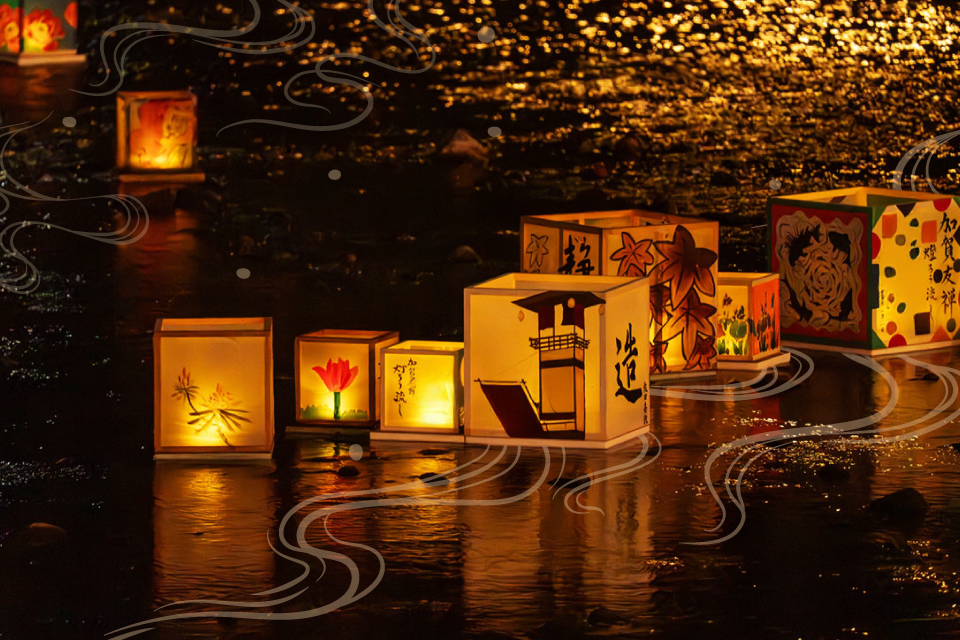
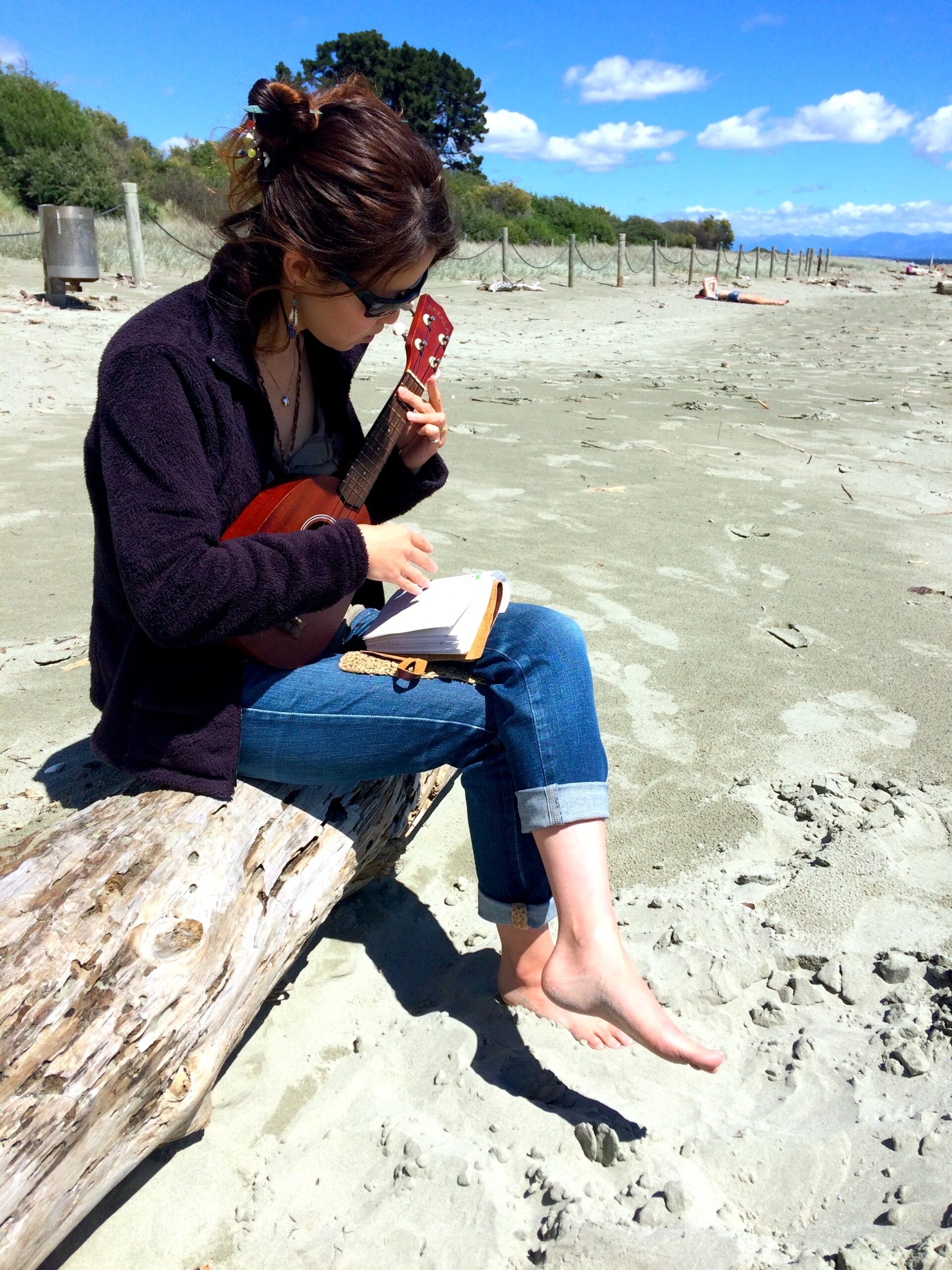
Obon, held in summer in various parts of Japan, is a uniquely Japanese warm traditional event to welcome and honor the spirits of ancestors.
In fact, similar customs have taken root in various Asian countries, and a common “love for life” can be felt. Obon is becoming increasingly popular among foreign tourists as an event that is both beautiful to see and memorable to experience.
Let’s take a look at Obon from a variety of perspectives, including its origins, local customs, similarities with other countries, and hands-on events that lead to cultural exchange with foreigners, and experience the depth and warmth of Japanese culture.
What is Obon in Japan?
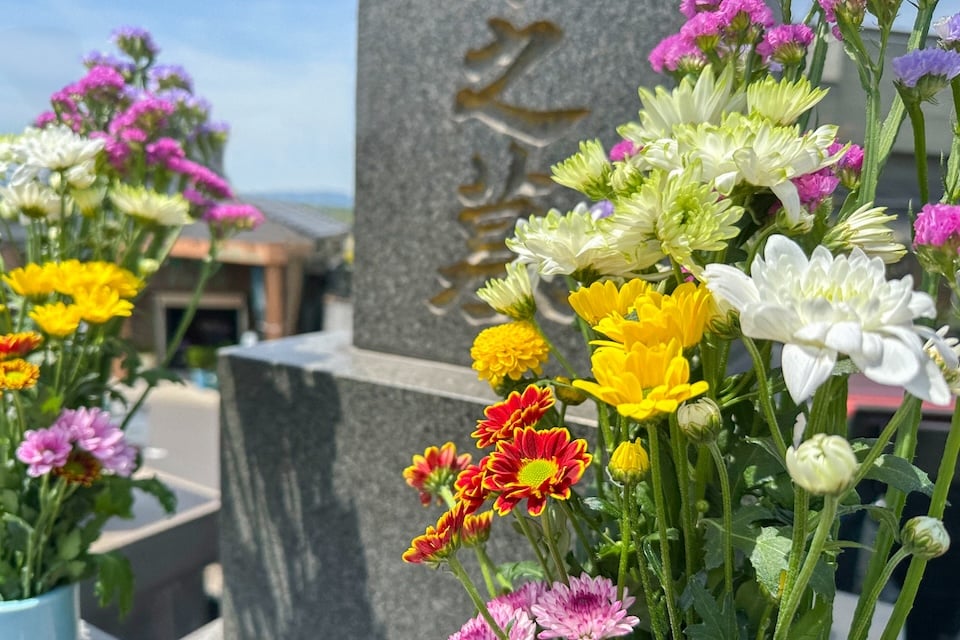
Obon is a traditional Japanese event to remember and express gratitude to deceased ancestors. It was born from a combination of Buddhist ideas and traditional Japanese beliefs. Many people return home with their families to visit the graves of their ancestors, welcoming them to their homes and spending a few days with them. The way of doing this differs slightly from region to region, but the spirit of importance is the same.
Origin and History of Obon
The origin of Obon is based on a story found in the Buddhist sutra “Urabon Sutra. It originated in India and was introduced to Japan via China.
The story goes that a monk named Mokuren wished to help his deceased mother, who was suffering, and offered food to many monks, which saved her life. This idea was introduced to Japan, and combined with the ancient belief in the importance of ancestors, it spread among the nobility in the Nara period (710-794) and among the common people in the Edo period (1603-1868).
Nowadays, it is not a religious event, but rather a familiar event where families gather together to cherish their ancestors.
Obon Period and Regional Differences
In many areas, Obon is celebrated from August 13 to 16 each year. This time of year often coincides with summer vacation and company vacations, and it is known that bullet trains and expressways are very crowded as more people return to their parents’ homes.
In some areas, such as Tokyo, the Obon festival is held in July, called “Shinbon. The reason for this is that in the past, when the new calendar was introduced, the date was shifted. In addition, in Okinawa and Amami regions, the “Kyubon” period, in which Obon is celebrated according to the lunar calendar, still continues to this day.
Although the time of year may differ, the feelings toward ancestors remain the same in all regions.
Typical customs during Obon
During the Obon season, many households burn a “Mukaebi” (welcoming fire) or“Okuribi” (sending-off fire) in front of their houses. These fires are lit in the hope that ancestors will not hesitate to come to the house and return safely.
Bon Odori” is a dance that began in the olden days to comfort the souls of the deceased, and is now a local festival that can be enjoyed by both children and adults. In addition, there is a custom of offering “Shoryo-uma” made of cucumbers and eggplants, as well as food and flowers called “Kumotsu”, which are cherished as a time for the whole family to think of their ancestors.
Daimonji Okuribi” in Kyoto and “Awaodori” in Tokushima are some of the traditional events that are lively and lively. They are very famous and attract many tourists.
Do foreign countries have Obon?
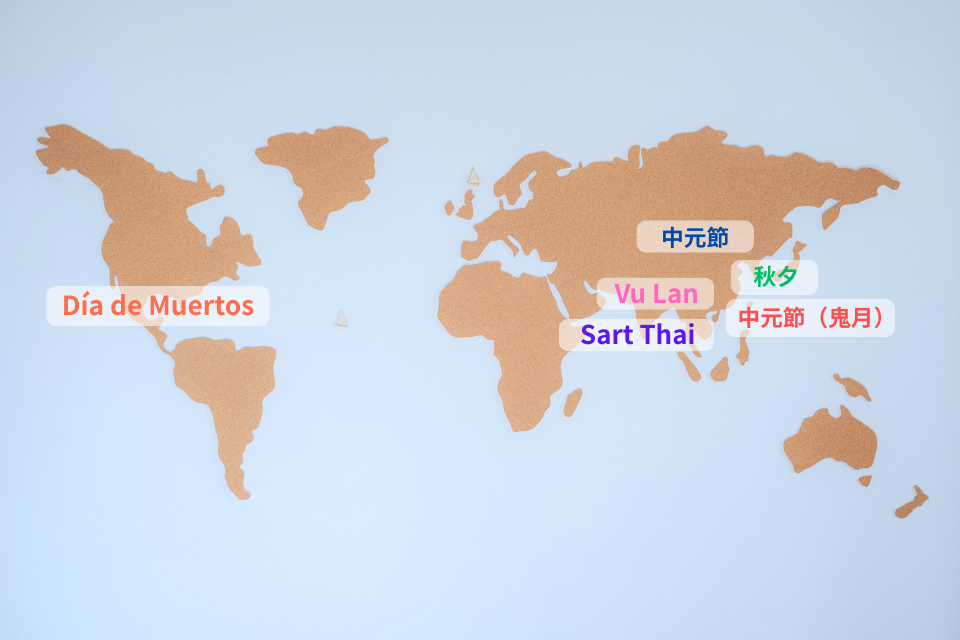
Similar to Obon in Japan, the culture of remembering and offering memorial services to ancestors is actually found in many countries around the world.
Some are similar to those of Japan, while others are surprisingly different. Comparing the events of different countries may give you a slightly different perspective on Japanese culture.
List Comparison of Overseas Obon Culture
| Country/Region | event name | time | feature | Commonalities (with Japan) |
|---|---|---|---|---|
| China | 15th day of the 7th lunar month | 15th day of the seventh lunar month | The gates of hell open and offerings are made to the spirits. | Ancestor and food offerings |
| Taiwan | Mid-Month Festival (Onigetsu) | seventh lunar month | Memorial service stalls will be set up throughout the city. | comfort the spirits of the dead |
| Vietnam | Vu Lan | 15th day of the seventh lunar month | Gratitude for mothers is central. | Buddhist and ancestral respect |
| tai (species of reddish-brown Pacific sea bream, Pagrus major) | Sart Thai (Sart Thai) | Around October 15 on the lunar calendar (September-October) | Offering offerings at temples to make offerings to ancestors and unrelated Buddhist deities | Buddhist culture of remembering ancestors through merit |
| Korea | Autumn Evening (Chuseok) | 15th day of the 8th lunar month | Graveside visits and traditional cuisine | Common for family return and grave visitation |
| Mexico | Día de Muertos (Day of the Dead) | November 1-2 | Colorful altar and geiko decorations | Culture of Reunion with the Dead |
China and Taiwan: The Chung Yuan Festival and the Spirit Offering Culture of the Demon Month
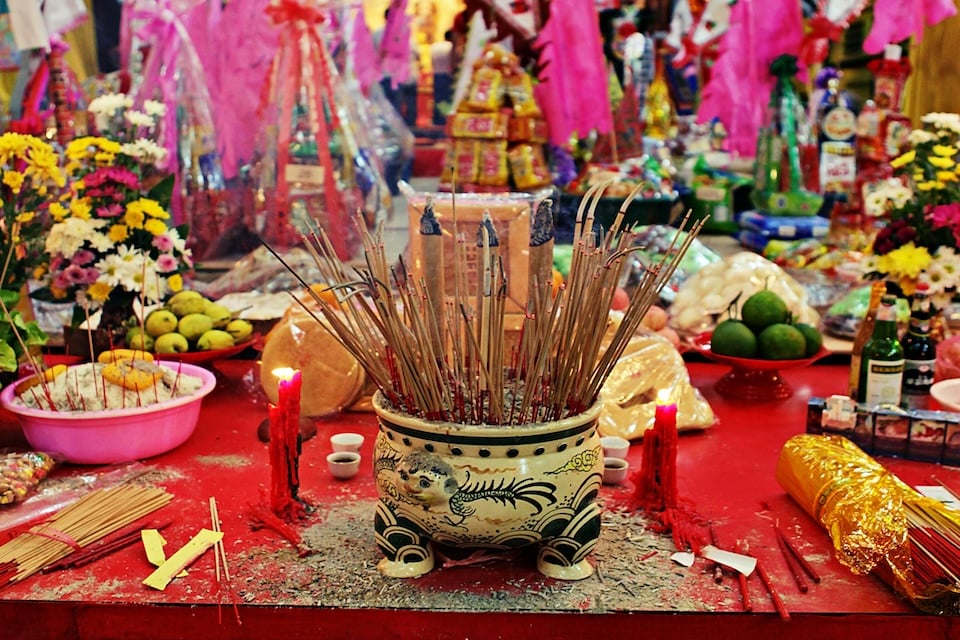
The Chinese “Chung Yuan Festival” is an event that was created by combining the Buddhist belief in Uran-Bon and the Taoist belief in Sanguan, and is celebrated on July 15 of the lunar calendar as a day to offer offer sacrifices to the spirits. It is believed that the door to the spirit world is opened to welcome the spirits returning to this world, and various ceremonies are held for the dead, such as floating lanterns and burning paper coins.
In Taiwan, this month is called “ demon month , ” during which the spirits of the dead are believed to move about freely, and it has become a widely rooted culture in society, with large-scale memorial services held by local communities and business units.
The sense of care for our ancestors is naturally integrated into our daily lives.
Vietnam: Vu Lan and Thanks to Family
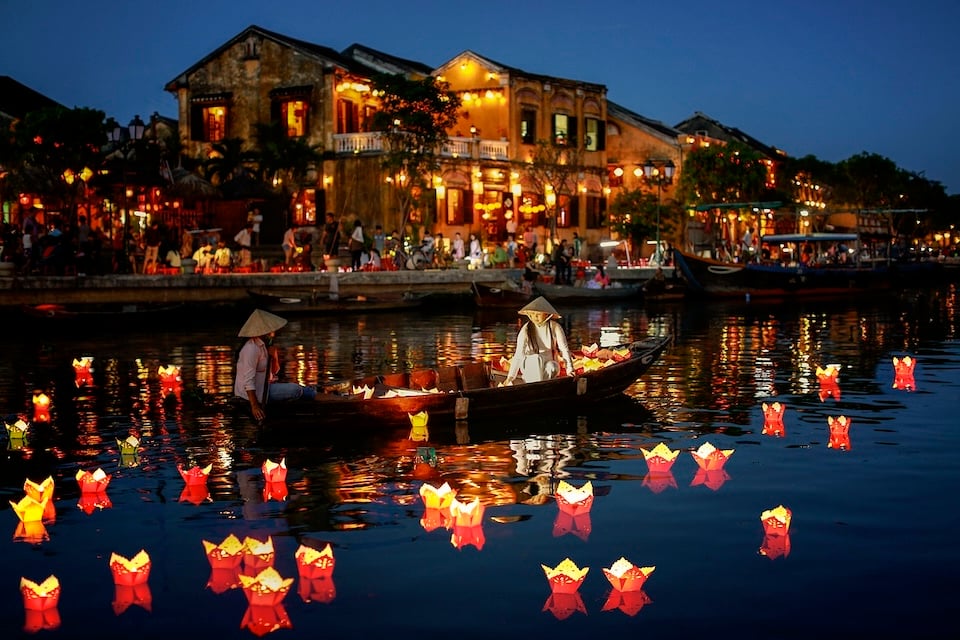
Vu Lan” in Vietnam is not only a Buddhist event to make offerings to ancestors, but also a “day of filial piety.
In Buddhism, it is considered a day to express gratitude to one’s mother in honor of the legend of Meren-sonja saving her mother, and there is a custom of decorating the chest with red and white roses. Many people visit temples on this day and perform sutra chanting and offerings of thanksgiving, which resonates with the quiet prayers of the Japanese Obon festival.
Many people also try to repay their debt to their ancestors and parents by becoming ordained for a short period of time and accumulating virtues, which shows their spiritual depth.
Thailand: Sart Thai and Ancestral Memorial Ceremony
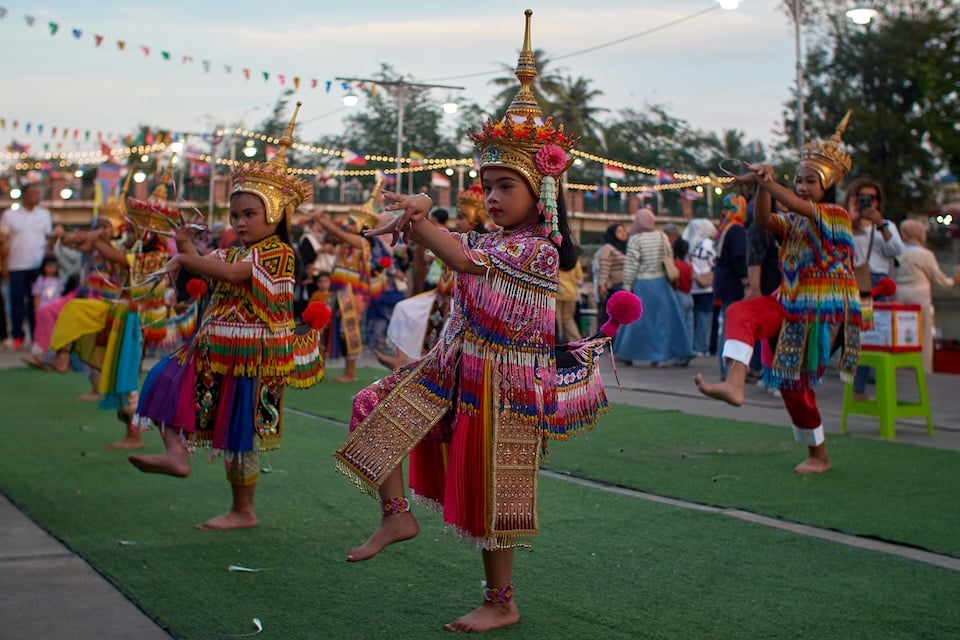
Sart Thai” is a Buddhist event held in Thailand on or around October 15 of the lunar calendar, and is widely known as a day for ancestral memorial services.
On this day, people visit temples to offer food and offerings to the spirits of family members and relatives who have passed away, and to accumulate virtues (merit) to wish for happiness in the next life. In some areas, offerings are also made to the unrelated Buddha. This is a traditional event that has taken root especially in southern Thailand.
Although the rituals are different from those of Obon in Japan, the spirit of “thinking of the deceased and making offerings to them” is the same, and it is an event where one can feel the respect for the dead that has taken root in various parts of Asia.
Korea: Autumn Evening and Family Reunion
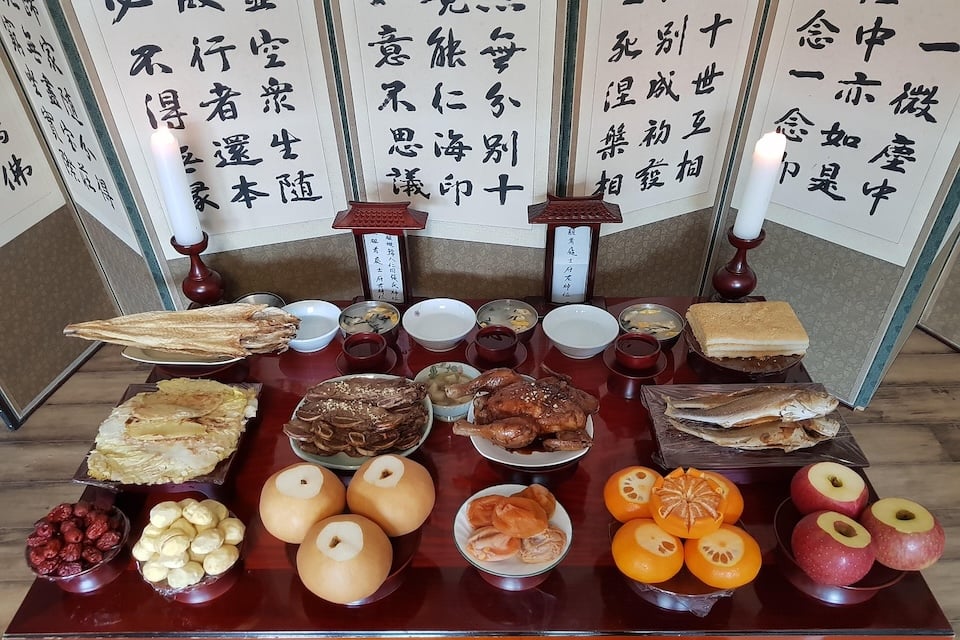
Korea’s “Chuseok” is a traditional holiday celebrated on the full moon day of the 15th day of the 8th lunar month, and is a time to celebrate the harvest and to give thanks to ancestors.
Many families clean the graves of their ancestors and offer thanks, after which the family gathers around traditional foods such as “songpyong” (pine cakes). This time of year is very similar to the rush to return to one’s hometown in Japan, as people return to their hometowns to such an extent that traffic jams occur.
It is also a place for reaffirming cultural identity, such as worship services conducted in traditional hanbok (Korean traditional clothing).
Mexico: A Colorful Culture of Offerings on Día de Muertos (Day of the Dead)

Día de Muertos (Day of the Dead) in Mexico is celebrated not as a day to grieve for the dead, but as a day to rejoice in being reunited with the dead.
At home, colorful altars called “ofrenda” are built and decorated with photos of ancestors, favorite foods, and flowers (especially marigolds). Families having picnics at the tombs and children enjoying the costume of a gaikotsu (a mythical creature) are striking examples of the values of cheerful acceptance of death.
In contrast to the Japanese Obon festival, which is a time of quiet prayer, the two share a profound similarity in that it is a time to remember the connection with one’s ancestors.

By comparing ancestral memorial service cultures from around the world, we can see that the “feeling of caring for the deceased” is widely shared across religions and national borders. It is interesting to note that each form strongly reflects the local way of thinking and living.
Why is the Obon experience so popular with foreigners?
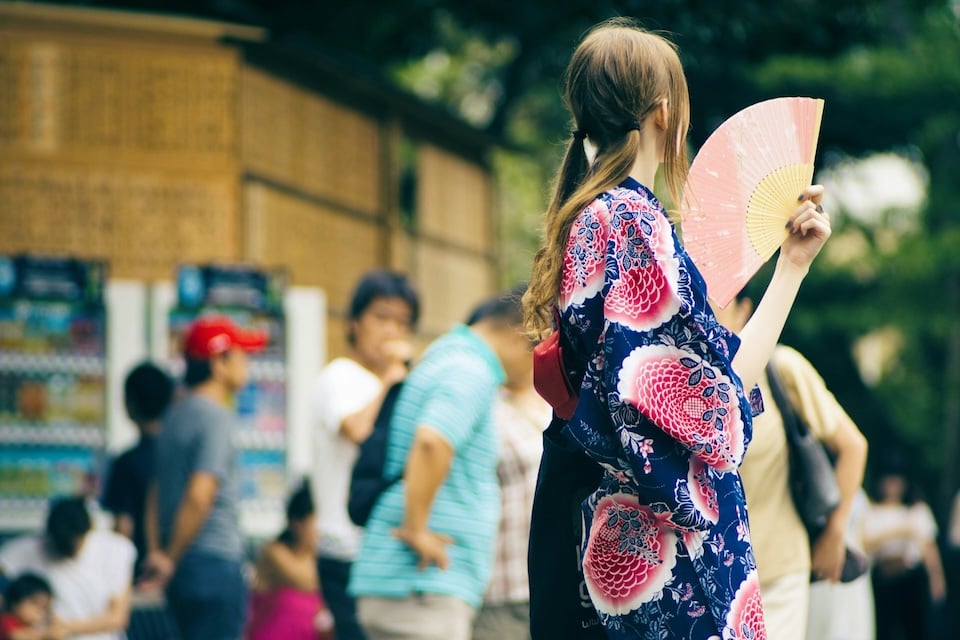
Obon events are attracting a great deal of attention from foreigners as a profound embodiment of Japanese culture and values. The “shared feelings” and “spiritual healing” that can be obtained through the experience are particularly appealing and set them apart from other tourist activities.
The quiet time of prayer, the contact with the local community, and the cultural background of the life of the people. The experiences woven together will leave a deep impression on visitors.
Visual beauty: bonfires and lantern floating
The lights of the bonfire floating softly in the darkness of the night are not only beautiful. Many foreigners are speechless and quietly moved when they see the scene, knowing the meaning of seeing off the departed.
The lantern floating ceremony, which combines the natural elements of fire and water, is often said to be a deeply spiritual experience, as the countless lights flowing down the river are reminiscent of the “departure of the soul.
The gentle lights floating in the dark night create a fantastic and somewhat mysterious atmosphere, and “Gozan-no-Okuribi” in Kyoto and “Seirei-nagashi” in Nagasaki are typical examples. These events are also photogenic and look great on social networking services, and are easily spread abroad through photos and videos, leading to strong memories as images of Japanese culture.
The Rhythm and Unity of Bon Dancing
Bon Odori is a summer tradition for Japanese people and a symbolic event of community bonding.
As a festival open to all, it is also a valuable opportunity for foreigners to join the dancing circle and experience “exchange without the need for words. As they move their arms and legs to the beat of the taiko drums, they will naturally blend into the unity of the event, bringing smiles and a sense of solidarity among the participants.
The experience of being welcomed not as a “tourist” but as a “participant” has deepened many people’s familiarity with Japan as a gateway from the culture of watching to the culture of dancing together.
Japan’s Unique Philosophy of “Life
At the root of Obon is the idea that “life does not belong to one person. The idea that those who have passed away and those of us who live in the present continue to be connected in our hearts gives us a sense of “quiet richness” that is in contrast to the values of today, which emphasize rationality.
The Japanese attitude of respect for nature and ancestors and gratitude for daily life is fresh and moving to many foreigners. In fact, an increasing number of foreigners tell us that they have experienced the Obon Festival and have been moved by the quiet prayers of the Japanese people.
The greatest charm of Obon lies in the “presence of the heart” that lies behind the formality and rules.
Recommended “Obon Experience x Japanese Culture” project

Obon is not just an event to be seen; it is a culture that can only be felt and experienced to be remembered. Especially for non-Japanese visitors, this participatory experience allows them to experience the spirituality of Japan and its connection with people.
They can be comforted by the serenity of the bonfire, share smiles with local people at the Bon Odori dance, and experience the fineness of Japanese culture by making spirit horses with their hands.
Such an experience will be a special memory of your trip to Japan.
Motenas Japan has prepared a specialObonexperience plan that is linked to traditional culture under the theme of “Feel the Obon.
In the unique summer scenery and air of Japan, you can interact with local people, learn the meaning of the event, and enjoy it with all five senses. This is a deeply satisfying experience that cannot be obtained through mere sightseeing.
Here we introduce four easy-to-understand and friendly hands-on programs that foreign visitors can participate in.
- Experience “Okuribi x Lantern Floating Experience” to see off the lights of prayer.
- Yukata x Bon Odori Experience” to feel the Japanese summer
- Handicrafts in remembrance of ancestors “Spirit Horse & Offering Making Experience”.
- Tomb Sweeping & Tea Ceremony Experience Tour” to experience the heart of Japanese culture
*Click to go to the details of the project.

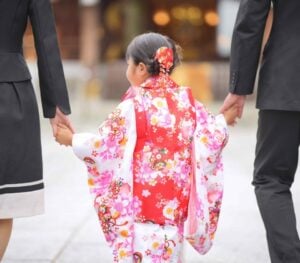
(1) “Sending off the Lights of Prayer” (Okuribi x Lantern Floating Experience)
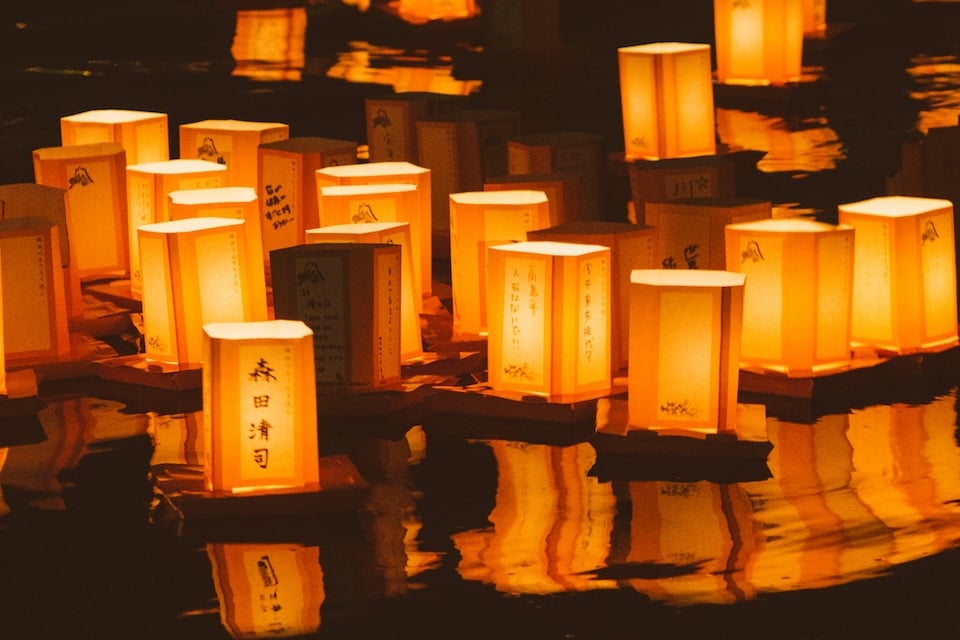
Floating lanterns made with one’s own hands on the surface of a quietly flowing river. Such an experience is a precious time to directly experience the Japanese culture of prayer. The lanterns are filled with thoughts of the departed and words of gratitude for the daysgone by. The sight of the lanterns flickering on the surface of the water as they move away from you will touch your heart beyond words.
By experiencing the preparation and rituals together with the local people, the meaning of the event and the feelings of each community will naturally be shared, making this an unforgettable cultural exchange.
Experience the Japanese summer in yukata x Bon Odori dance
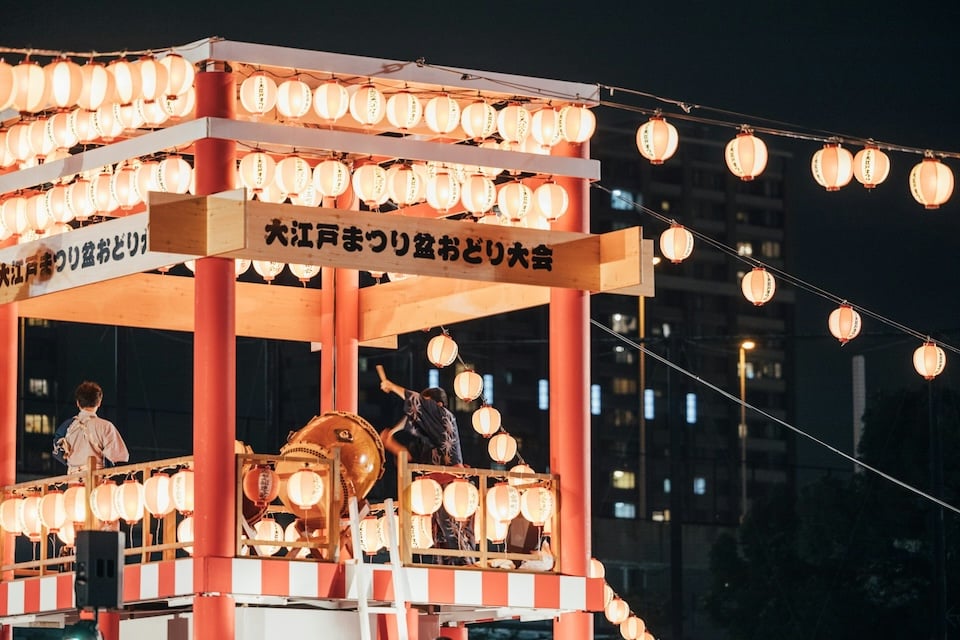
Dancing in a circle with the locals in yukata on a summer evening. This experience is a time when you can experience firsthand the Japanese sense of the seasons and the bonds of community, using all of your senses of sight, hearing, and body movement.
The experience offered by Motenas Japan includes a dressing workshop and a mini-lecture on traditional dances, so that participants can learn the background and meaning of the dances. After the dance, visitors can enjoy the tastes of the food stalls, take commemorative photos, and enjoy an immersive experience as if they were a part of the community.
-1-300x200.png)
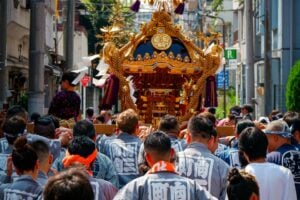
3) Handicrafts in memory of ancestors “Spirit Horse & Offering Making Experience
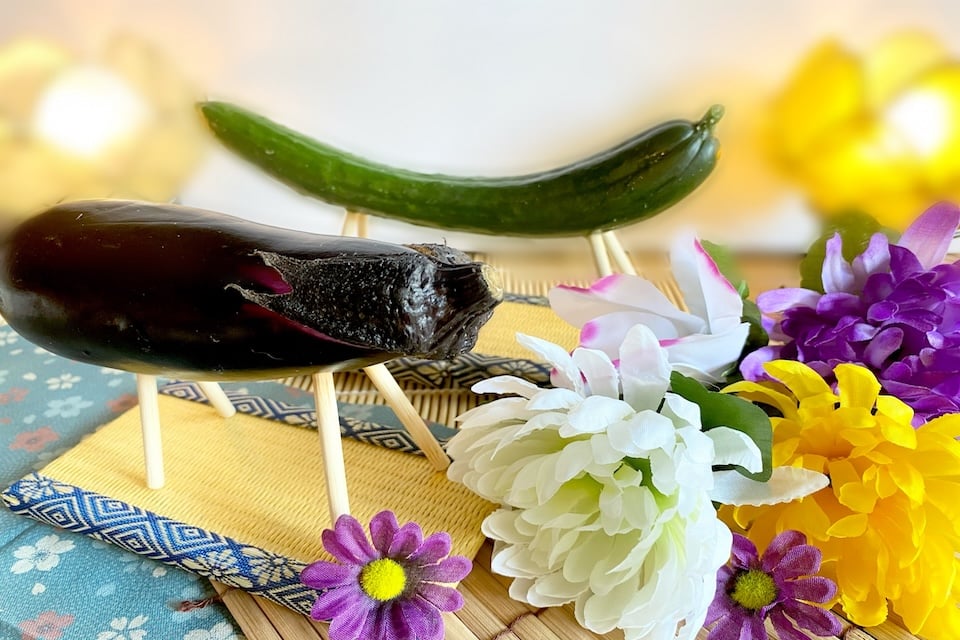
Known as the “cucumber horse and eggplant cow,” the spirit horse is a symbol of Obon, and is considered the vehicle by which the ancestors travel between worlds.
In the workshops offered by Motenas Japan, participants not only enjoy crafts, but also have time to learn about the meaning behind the offerings and the background of spirit beliefs. Popular with families with children, these workshops provide a valuable opportunity to share Japanese culture with people of all ages.
Regional productions, such as using local vegetables, are also possible.
4) “Tomb Sweeping & Tea Ceremony Experience Tour” to experience the heart of Japanese culture
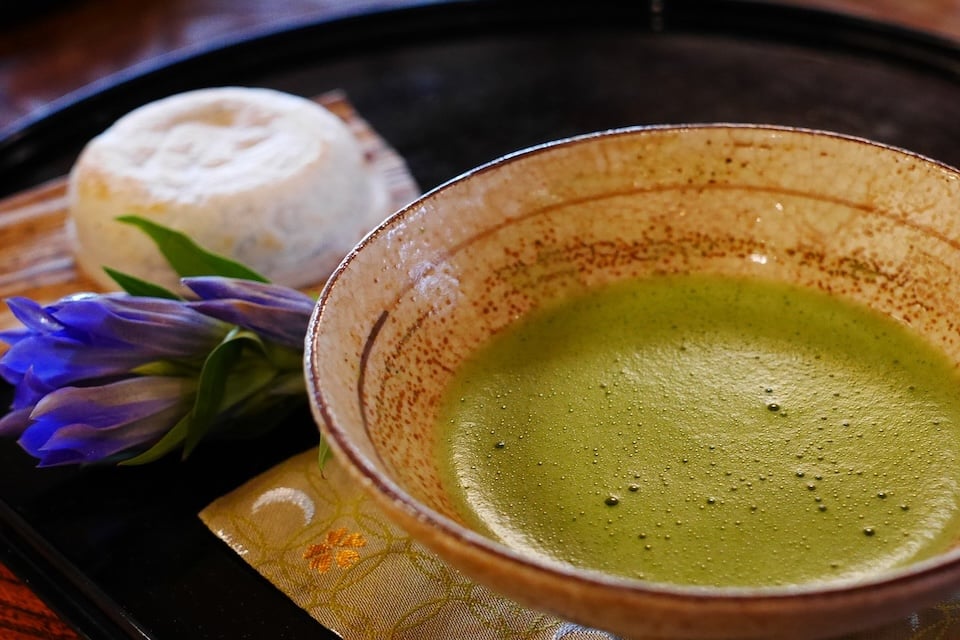
In this program proposed by Motenas Japan, participants will experience visiting graves at a temple with a cultural explanation, and then move to a tea ceremony room to taste the quiet manners and spirit of the tea ceremony. The priest and navigator will carefully explain the significance of visiting graves and the Japanese view of life and death, making this not just a visit to a temple, but a memorable “learning experience.
In the tea ceremony experience, visitors can experience the spirit of hospitality through visible gestures such as the meaning of wagashi (Japanese confectionery) and the use of seasonal utensils. The experience is a profoundly Japanese one, where spirituality and aesthetics intersect.

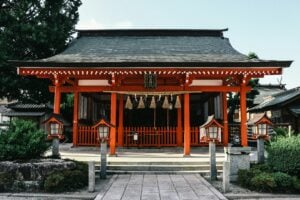
Frequently Asked Questions (FAQ) about Obon
Is Obon a Buddhist event? Or is it uniquely Japanese?
Obon is an event that originally originated in Buddhism, but now it has become a Japanese cultural event that transcends religion and is familiar to many people. It has become a custom to cherish family and community ties, regardless of religious affiliation.
Are there “Obon-like” events overseas? Can tourists participate?
Yes, there are! There are open ancestor memorial services in many countries that anyone can enjoy, such as Taiwan’s “Demon Month” and Mexico’s “Day of the Dead”. Many of them are attractive to tourists as well, as they allow them to take pictures and experience things together.
Can I enjoy it while traveling? What are your recommendations for Obon events in Japan?
Daimonji Okuribi in Kyoto,” “Awaodori in Tokushima,” and “Seirei Nagashi in Nagasaki” are very popular among tourists. Many foreigners rent yukata (light cotton kimono) and participate in Bon Odori, giving them a chance to blend naturally into the local festivities.
Are Obon and Halloween similar? How are they different?
Both have the theme of the “return of the dead,” but the atmosphere is completely different. Obon is a quiet and spiritual time, while Halloween is a fun and lively costume event. It is a comparison that reveals the cultural differences in regard to death.
How would you explain Obon to a foreigner?
English expressions such as ” Japanese All Souls Festival ” and ” spiritual homecoming for ancestors ” are easy to understand. Many people will be interested and sympathize with the event if you tell them that it is an event for family ties and remembering the deceased. It is effective to accompany with photos and actual experiences.
Connecting Hearts and Minds with the World through Obon Culture
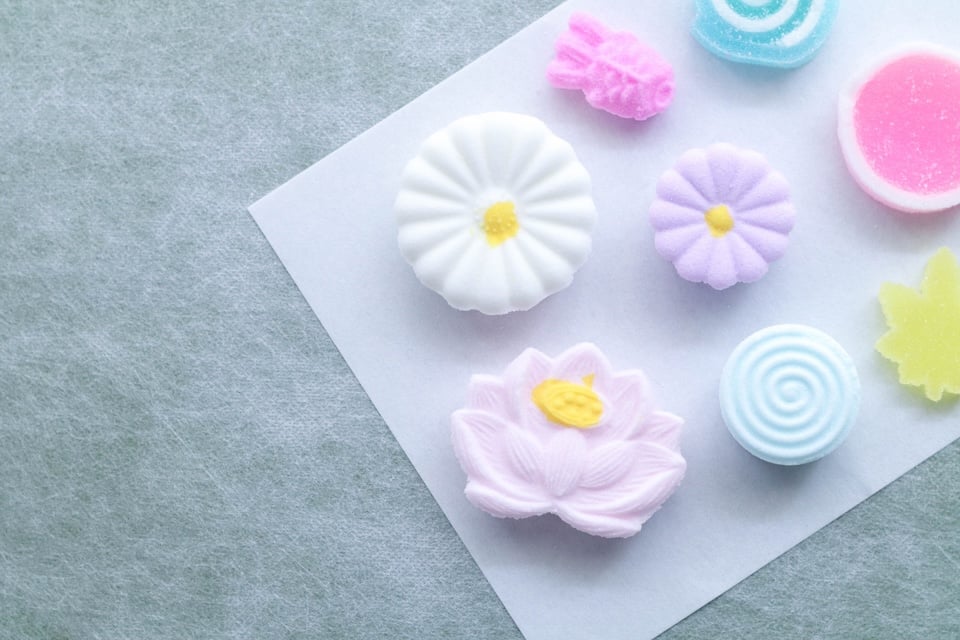
Obon is an important part of Japan’s memorial service culture, but it also has a common spirit that can be found in many other Asian countries. The real charm of this event is that you can experience the spirit of caring for life through the experience of the event, not just seeing and enjoying it.
Telling foreigners about Obon not only introduces them to Japanese culture, but also provides an opportunity for people to share their feelings of connection and gratitude. Why not be a “welcomer” yourself and share the spirit of Obon with the world?
Motenas Japan can propose a plan that combines “Obon” and “Japanese culture”.
We can also arrange interpreters and consult with you on venues. Please feel free to contact us if you would like to have a unique “Obon x Japanese culture experience” or if you would like to entertain foreign guests.

旅をこよなく愛するWebライター。アジアを中心に16の国にお邪魔しました(今後も更新予定)。
ワーホリを機にニュージーランドに数年滞在。帰国後は日本の魅力にとりつかれ、各地のホテルで勤務。
日本滞在が、より豊かで思い出深いものになるように、旅好きならではの視点で心を込めてお届けします!





